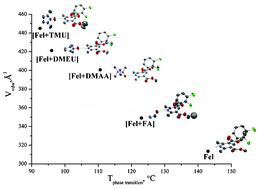Crystal architecture and physicochemical properties of felodipine solvates†
Abstract
Solvates of the calcium-channel blocking agent

* Corresponding authors
a
Institution of Russian Academy of Sciences, Institute of Solution Chemistry RAS, 153045 Ivanovo, Russia
E-mail:
glp@isc-ras.ru
Fax: +7 4932 336237
Tel: +7 4932 533784
b Department of Physics, Chemistry and Pharmacy, University of Southern Denmark, Campusvej 55, 5230 Odense M, Denmark
Solvates of the calcium-channel blocking agent

 Please wait while we load your content...
Something went wrong. Try again?
Please wait while we load your content...
Something went wrong. Try again?
A. O. Surov, K. A. Solanko, A. D. Bond, A. Bauer-Brandl and G. L. Perlovich, CrystEngComm, 2013, 15, 6054 DOI: 10.1039/C3CE40715B
To request permission to reproduce material from this article, please go to the Copyright Clearance Center request page.
If you are an author contributing to an RSC publication, you do not need to request permission provided correct acknowledgement is given.
If you are the author of this article, you do not need to request permission to reproduce figures and diagrams provided correct acknowledgement is given. If you want to reproduce the whole article in a third-party publication (excluding your thesis/dissertation for which permission is not required) please go to the Copyright Clearance Center request page.
Read more about how to correctly acknowledge RSC content.
 Fetching data from CrossRef.
Fetching data from CrossRef.
This may take some time to load.
Loading related content
